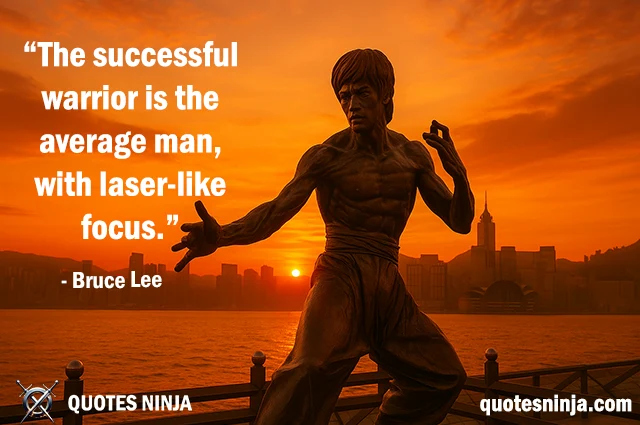
Inspirational Quote: “The successful warrior is the average man, with laser-like focus.” attributed to Bruce Lee, was a Hong Kong-American martial artist, actor, filmmaker, and philosopher. He was the founder of Jeet Kune Do, a hybrid martial arts philosophy which was formed from Lee’s experiences in unarmed fighting and self-defense—as well as eclectic, Zen Buddhist and Taoist philosophies—as a new school of martial arts thought.
Deeper Meaning of Inspirational Quote
The quote “The successful warrior is the average man, with laser-like focus.” carries a powerful message about the role of focus and discipline in achieving success.
Here’s a breakdown of the quote:
🔹 “The successful warrior…”: This part refers to someone who achieves great things, especially through strength, discipline, and perseverance — like a warrior.
🔹 “…is the average man…”: This emphasizes that success isn’t reserved for people with extraordinary talents, intelligence, or background. Instead, it’s accessible to anyone, including those who might seem ordinary or average.
🔹 “…with laser-like focus.”: This is the key. What sets the successful warrior apart is not superior ability, but unwavering focus. Like a laser beam, their attention is precise, intense, and directed at a specific goal — cutting through distractions and staying committed over time.
💡 The core message:
You don’t need to be a genius or a prodigy to succeed. Consistent, focused effort — even from an average person — can lead to extraordinary results. Success is less about potential and more about what you do with it.
Here’s a story inspired by inspirational Quote “The successful warrior is the average man, with laser-like focus.”
Inspirational Story: “The Quiet Flame”
Kaito Nakamura wasn’t born a warrior. In fact, most of his childhood was spent trying to avoid fights, not win them. The son of a seamstress and a retired bus driver in Osaka, he was as average as they came — small, soft-spoken, and often overlooked. While other boys boasted about black belts and knockouts, Kaito preferred books and balance. But everything changed the day his older brother, Haru, was badly beaten by a local gang.
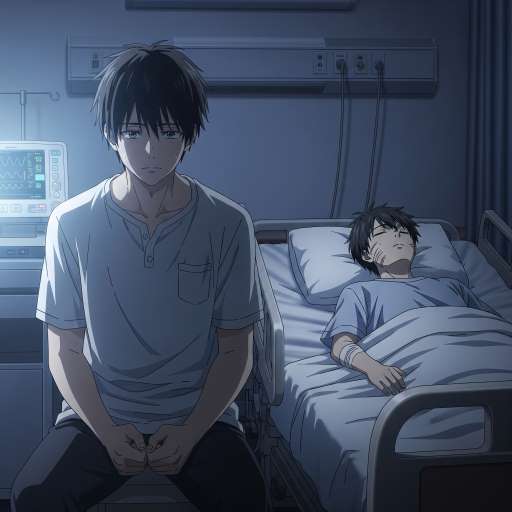
Young Kaito in the Hospital Room:
That night, as Kaito sat by Haru’s hospital bed, a quiet fire ignited within him. He didn’t want revenge — he wanted control. Control over fear, weakness, and the chaos that had turned his family’s life upside down. So, at sixteen, he stepped into his first dojo.
At first, no one took him seriously.
He was clumsy. He lacked speed and strength. Other students dominated sparring sessions while he fell again and again. Still, he showed up every day. Rain or shine, he arrived early, stayed late, and asked questions no one else bothered with.
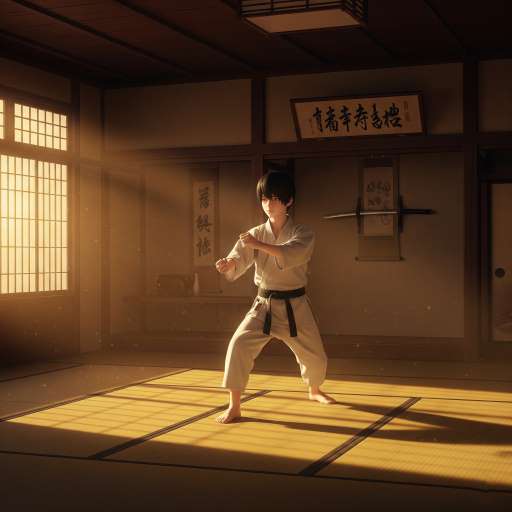
Kaito Alone in the Dojo:
To the surprise of his instructors, Kaito didn’t quit. Instead, he studied harder. While others practiced flashy kicks, he focused on fundamentals — stances, footwork, breathing. Soon, he began cross-training. Jiu-jitsu for ground control. Muay Thai for striking. Aikido for balance. He didn’t try to master one art — he tried to understand them all.
Over time, his own style emerged — a quiet fusion of flow and precision. He called it Shinkō-ryu, or “The Path of Focus.” Unlike traditional fighters who relied on power or speed, Kaito relied on timing, strategy, and stillness. Every move had purpose. Every decision had clarity.
By twenty-three, he entered his first amateur tournament. No one knew his name. His gear was plain. His corner was empty. His opponent was a national champion. People expected a short fight — but they underestimated the one thing Kaito had that his opponent didn’t: Laser-like focus.
As the match began, the crowd cheered for the favorite. But Kaito didn’t flinch. He watched, waited, adjusted. His opponent threw wild punches and spinning kicks, but Kaito moved like water — absorbing, redirecting, and striking only when necessary. Three rounds later, he stood with his hand raised, sweat dripping, chest calm.
From there, the wins kept coming. Not because Kaito was stronger — but because he never broke focus. While others partied after victories, he returned to the mat. While his rivals posted training clips on social media, he meditated in silence. He wasn’t chasing fame or titles — he was chasing mastery.
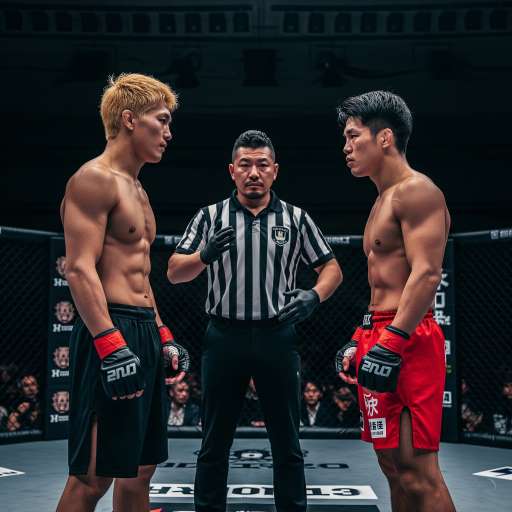
Kaito in NeoArts Tournament:
Then came the big test: the NeoArts Open, a global championship featuring the best hybrid fighters from around the world. Kaito was the lowest-seeded fighter. Even his coach advised him to “just enjoy the experience.”
But Kaito didn’t come to enjoy it. He came to prove something — not to others, but to himself.
Round after round, he faced fighters with more accolades and athleticism. A Brazilian with lightning-fast capoeira. A Russian grappler built like a boulder. A Canadian taekwondo prodigy with a 15-0 record.
Each time, Kaito stepped into the cage with quiet eyes and deliberate breath.
He wasn’t the fastest. He wasn’t the strongest.
But he never lost focus.
He read opponents like books — identifying patterns, spotting hesitation, and striking with purpose. He fought not with aggression, but with clarity. Every time his mind drifted, he brought it back. Every time fear crept in, he returned to the moment. By the time he reached the finals, the crowd didn’t see an underdog. They saw a force — steady, precise, unstoppable.
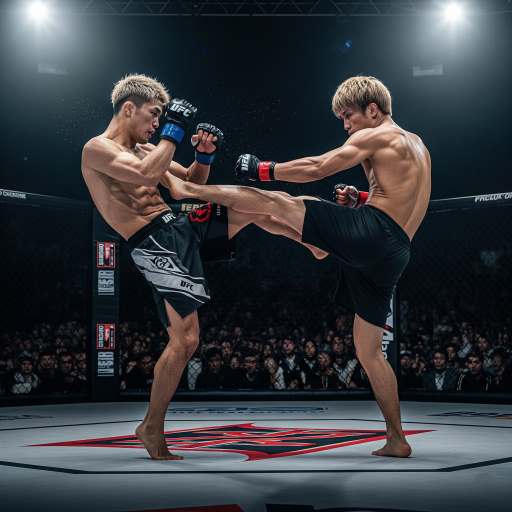
Kaito Mid-Fight, NeoArts Tournament:
In the championship bout, he faced Leo Moretti, a charismatic Italian kickboxer known for his brutal knockouts. The arena was electric. Cameras flashed. Commentators hyped a quick finish.
The bell rang.
Leo charged forward with confidence, throwing a barrage of kicks. Kaito didn’t panic. He stepped aside, absorbed the rhythm, and began to dismantle the attack — one counter, one sweep, one breath at a time. By the third round, Leo slowed. By the fourth, he gasped for air.
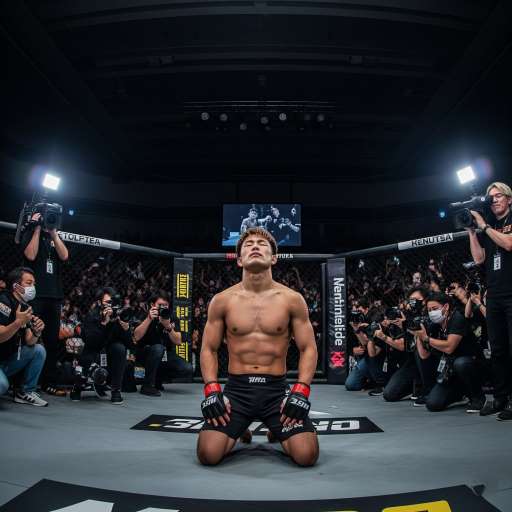
Kaito Kneeling in Victory:
And in the fifth, Kaito ended it — not with a flashy knockout, but with a quiet choke that forced a tap.
The arena fell silent. Then it roared.
Yet Kaito didn’t raise his fists. He knelt in the center of the cage, closed his eyes, and breathed.
After the ceremony, a reporter pushed through the crowd. “Kaito!” she shouted, holding a mic. “What’s your secret? How does a quiet, average man rise to become world champion?”
Kaito looked up and smiled.
“I’m just an average man,” he said. “But I fight with focus. And that’s enough.”
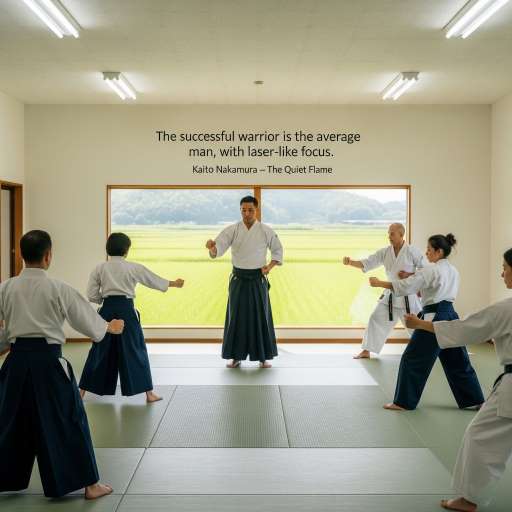
The Dojo with the Quote on the Wall:
Years later, students from around the world traveled to a modest dojo tucked behind a rice field in Kyoto. There, the world champion taught them not just how to fight — but how to focus. No mirrors. No music. Just breath, movement, and discipline.
On the wall hung a single quote:
“The successful warrior is the average man, with laser-like focus.”
And beneath it, a simple name:
Kaito Nakamura — The Quiet Flame.
Here is the ending of inspirational story from the quote “The successful warrior is the average man, with laser-like focus.”
Moral of the Story:
You don’t need to be born with extraordinary talent or strength to achieve greatness. True success comes from unwavering focus, consistent discipline, and the desire to master yourself more than the competition. Like Kaito, even an average person can rise above the rest — not by chasing fame or power, but by sharpening their skills every day and staying mentally centered, no matter the pressure.
In short: Focus and persistence turn ordinary people into extraordinary warriors.
To explore more on stories and dive into related ideas, be sure to check out the other posts where we cover all sort of stories related to quotes. Stay tuned for more…..
To explore more on quote topics, be sure to check out the other topics where we cover all categories of quotes. Stay tuned for more…..

